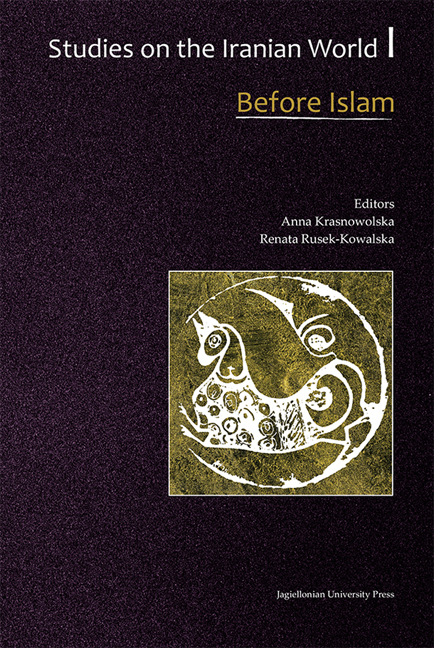Fictional Structure of the Middle Persian Ayādgār ī Zarērān
from Literature
Published online by Cambridge University Press: 12 January 2018
Summary
SUMMARY
Ancient myths, retold by generation after generation, gradually lose some of their typical features i.e. god-like characters, super-naturalness and sanctity. This process results in stories containing ancient motifs and archetypes. In this research, the fictional structure of Ayādgār ī Zarērān – a story deriving from an ancient myth – will be examined. This structure includes the elements of theme, verisimilitude, plot, Freytag's pyramid, conflict, characterization, viewpoint, setting and tone of voice. Additionally universal archetypes present in the text will be analyzed. Accordingly, the narrative features of the text are presented, and the foundation of narration in ancient Iran is shown and its qualities are illustrated.
Middle Persian (Pahlavi) refers to the Persian language between c. 300 B.C. and c. 950 A.C. The literary remains from this long period are few and of secular works only fugitive pieces survive. These books, in the vast majority of cases, safeguard older materials going back to the Sasanian period and, in some cases, even earlier. The surviving Pahlavi literature preserves part of the literary heritage of the late Sasanian period, with a great prevalence of religious books. As Mary Boyce writes: ‘The state of Zoroastrian writings in Middle Persian (Pahlavi) is paradoxical in that they represent the literature of a religious minority in its country of origin, where it was once supreme.’
In pre-Islamic Iran, writing down either literary or religious texts was not common. Texts were transmitted orally from one generation to the next; it was not considered necessary to write them down. Only official, political and financial documents were considered worthy of being written. One of the reasons which persuaded the Sasanians to consider writing down their oral literature is the radical change in themes and literary fashions brought about by the Arab conquest and the other should be the fact that only during the latter part of this period, the Sasanian epoch (c. 224–652 A.C.), did Persian literature begin to evolve from an oral (uzwānīg) to a written (nibēsišnīg) form.
Several different literary genres are represented in Middle Persian literature, and the vast majority of them relate to religious themes. Works of fiction include historical novels, stories, fables, folk and fairy tales. In spite of the fact that sole literary texts did not survive; some small books, that are not considered to be completely religious, have survived.
- Type
- Chapter
- Information
- Studies on the Iranian World: Before IslamMedieval and Modern, pp. 105 - 118Publisher: Jagiellonian University PressPrint publication year: 2015



